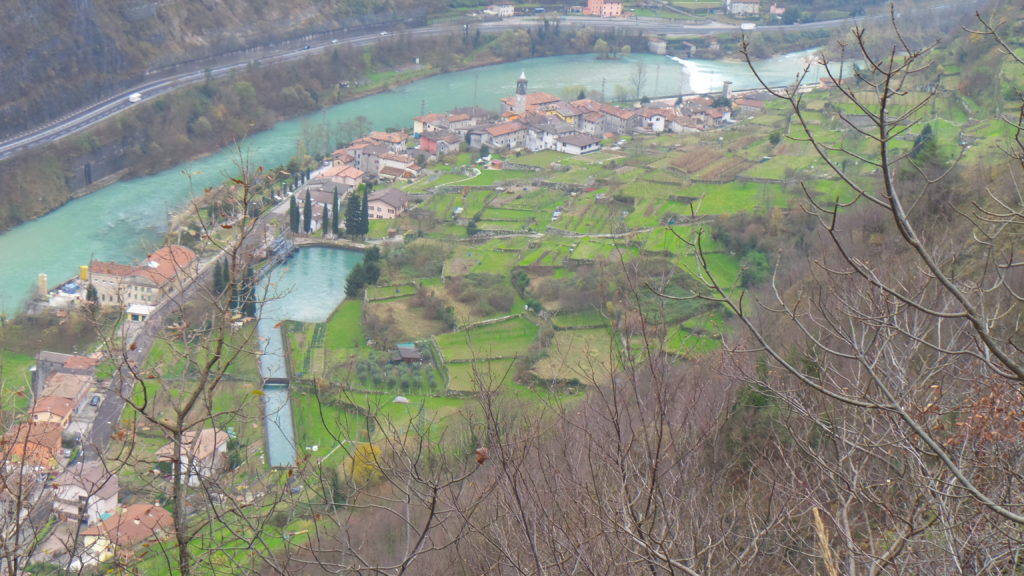The terraces, known as ‘masière’ in dialect, are real dry stone walls, built without using cement. They are indubitably the man-made feature that defines the Valstagna landscape more than any other. The locals once had to rely on the fertile land to cultivate tobacco, the prevailing crop in centuries past and up until after the Second World War, constructing these dry stone containing walls. Plenty of terraces still remain in the Brenta Valley and the slopes around Valstagna.
You can see it all for yourself by visiting the terraces near Valstagna. Head north from the town’s main square for a few hundred metres up a steep surfaced road on the left, with the playing field below you, until you reach the courtyard of a splendid group of houses. From here, there are numerous alternative routes to follow, without a set destination, just taking any of the paths heading up into the terraces and to the lone houses. The main junction is for the path that leads to the Contra’ Mattietti (abandoned) and up and up (path 781) until you reach the Osteria di Piangrande halfway along the Strada Provinciale that takes you up to Foza. Up on the terraces, besides amazing views of the valley, you can admire numerous houses and a water well carved out in a cave. Another short walk is the steep path up a partly-surfaced road which bears left as soon as you reach Val Franzela, at Contra’ Giaconi.

